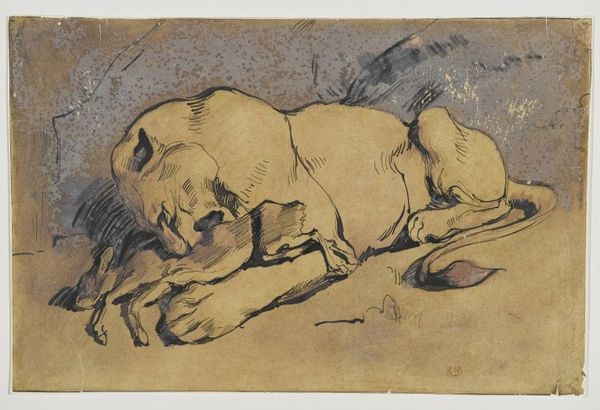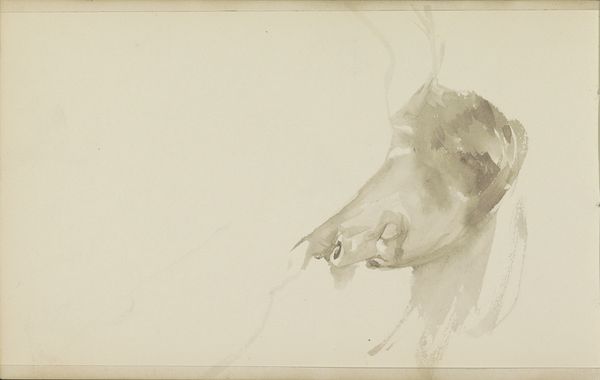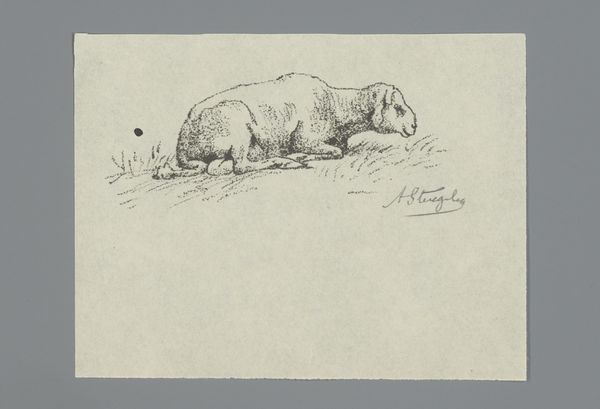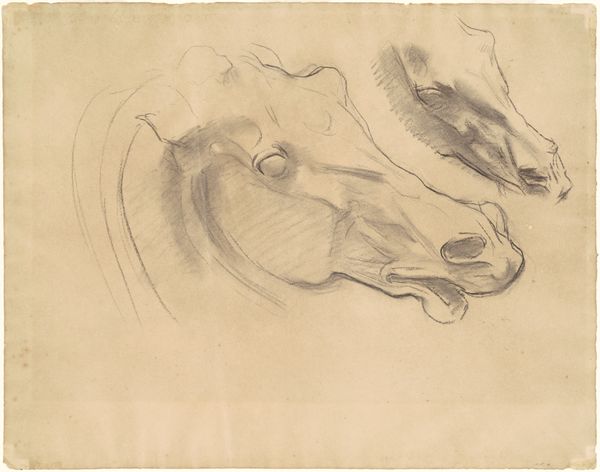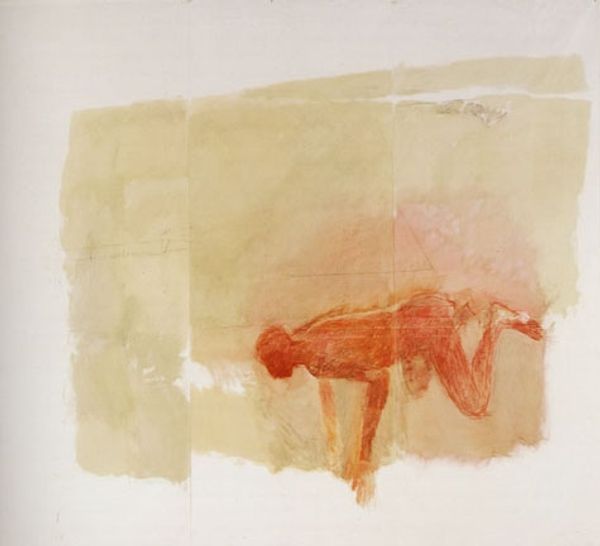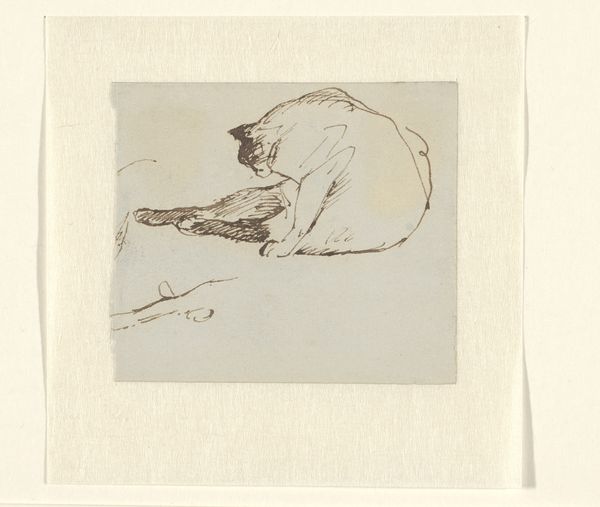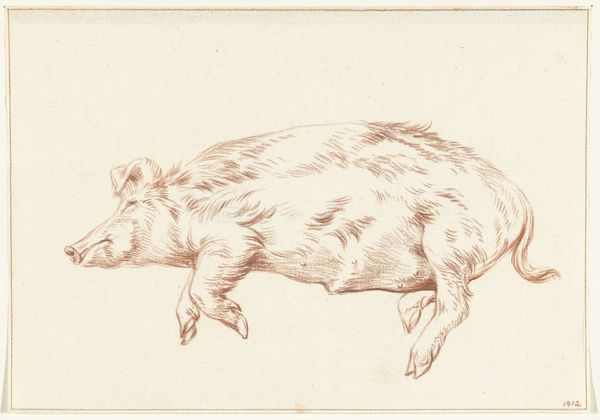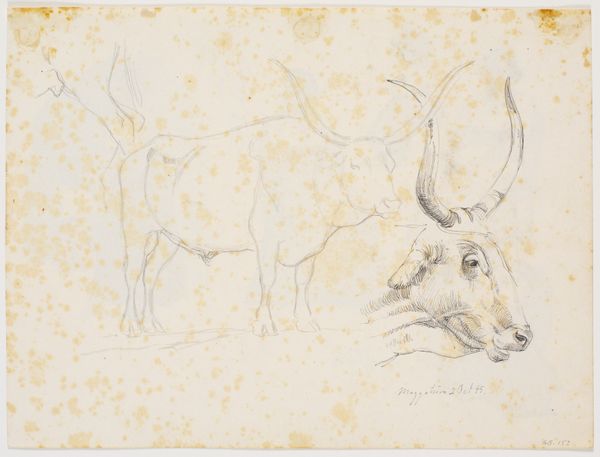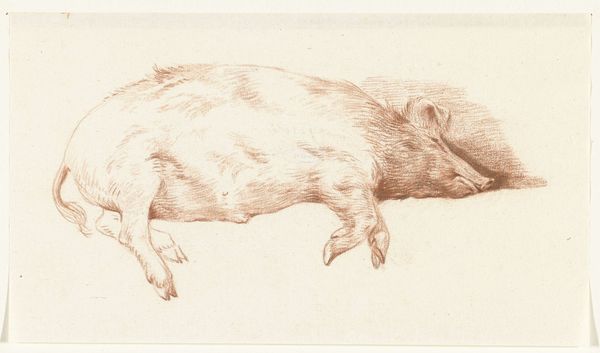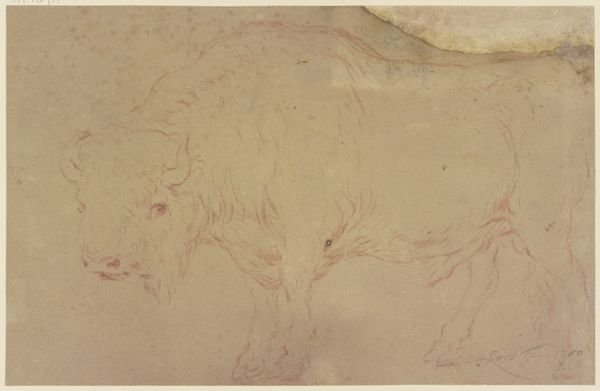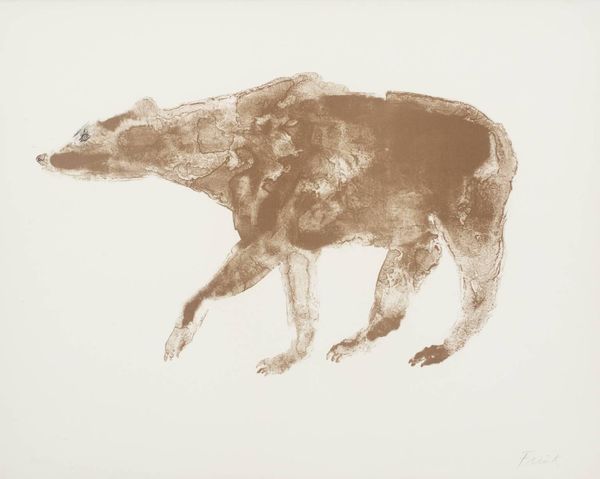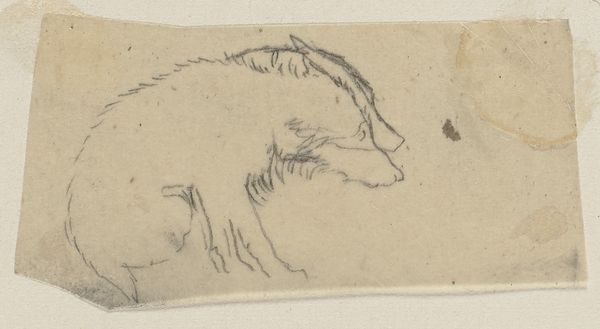
painting, oil-paint, impasto
#
portrait
#
animal
#
painting
#
impressionism
#
oil-paint
#
oil painting
#
impasto
#
symbolism
#
genre-painting
#
watercolor
#
realism
Copyright: Public Domain: Artvee
Editor: This is "Pigs," an 1875 oil painting by James Ensor. I'm really struck by the brown impasto, it looks like thick clay, almost sculptural. What can you tell me about the way this piece was made? Curator: The materiality of Ensor's "Pigs" is key. Note the impasto – the thick application of oil paint. Think about what it means to portray farm animals with such a laborious, almost sculptural technique. It elevates, but also perhaps distorts, their status, questioning the division between high art and representations of rural life. Consider the pigpens as factories for meat, where is the labor in the countryside represented here, and who profits from it? Editor: That's a perspective I hadn't considered. The heavy paint almost feels…oppressive? What do you mean about blurring the lines? Curator: Ensor's choice of oil, traditionally used for portraits of the wealthy, is fascinating. The pigs aren't simply animals in a barn; their texture transforms them. Notice the swift brushstrokes, they are rapidly made and quickly consumed, reminiscent of other kinds of commodity production. This challenges academic art practices where animal subjects were not so highly regarded as displays of skill or worthy of artistic representation. It disrupts a clear hierarchy of subject and making. The very act of portraying pigs with such valued, refined materiality disrupts this idea. Do you see it that way? Editor: I think so. It feels less like a detached observation and more like an active engagement with ideas about value and labor in art, doesn't it? I see a painting with socio-economic messages made out of material worth that goes beyond depicting only mere animals. Curator: Precisely. "Pigs," then, becomes a material commentary, revealing underlying production and power dynamics that both elevated art and rural labor simultaneously. A great material paradox. Editor: That has definitely changed the way I see this piece. Thanks for sharing your expertise!
Comments
No comments
Be the first to comment and join the conversation on the ultimate creative platform.
